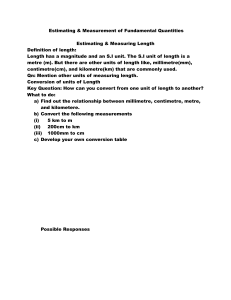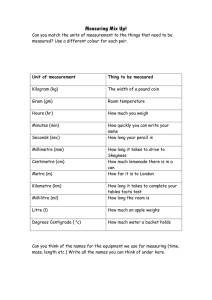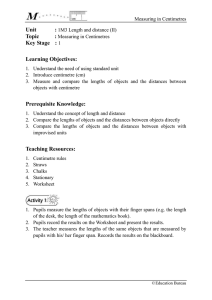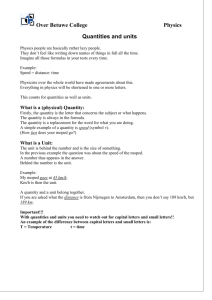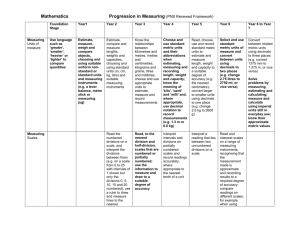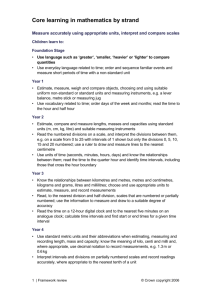Errors in Measurement
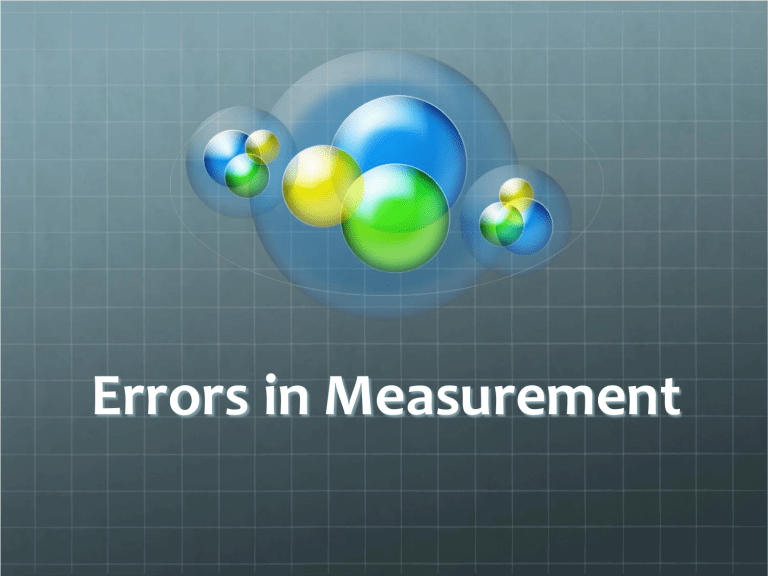
Errors in Measurement
No Measurement is
Accurate!
Errors occur because of:
Parallax error (incorrectly sighting the measurement).
Calibration error (if the scale is not accurately drawn).
Zero error (if the device doesn’t have a zero or isn’t correctly set to zero).
Damage (if the device is damaged or faulty).
Limit of reading of the measurement device (the measurement can only be as accurate as the smallest unit of measurement of the device).
Definitions
Limit of Reading: is the smallest unit of measurement on the measuring instrument.
The Greatest Possible Error (also called the absolute error): is equal to half the limit of reading.
The Upper and Lower Limits: are the smallest and largest value between which a measurement can lie.
Example
Different wrenches have their sizes identified as
2.0cm, 3.0cm, 4.0cm etc.
Is this just advertising or is there are difference between 2 cm and 2.0 cm?
2 cm or 2.0 cm
Which device gave which m’ment?
What range of m’ments could be classified as 2cm using the top device?
What range of m’ments would be classified as 2.0 cm using the bottom device?
2 cm
The measurement has been done to the nearest centimetre (ie limit of reading is the nearest centimetre).
The greatest possible error is half a centimetre.
The actual measurement lies somewhere between
1.5 cm and 2.5 cm.
2.o cm
The measurement has been done to the nearest millimetre or tenth of a centimetre (ie limit of reading is the nearest millimetre).
The greatest possible error is half a millimetre (or
0.05 of a centimetre).
The actual measurement lies somewhere between
1.95 cm and 2.05 cm.
